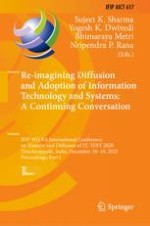2020 | OriginalPaper | Chapter
Occupant Adoption of IoT Based Environment Service in Office Spaces: An Empirical Investigation
Authors : Arunvel Thangamani, L. S. Ganesh, Anand Tanikella, A. Meher Prasad
Published in: Re-imagining Diffusion and Adoption of Information Technology and Systems: A Continuing Conversation
Publisher: Springer International Publishing
Activate our intelligent search to find suitable subject content or patents.
Select sections of text to find matching patents with Artificial Intelligence. powered by
Select sections of text to find additional relevant content using AI-assisted search. powered by
